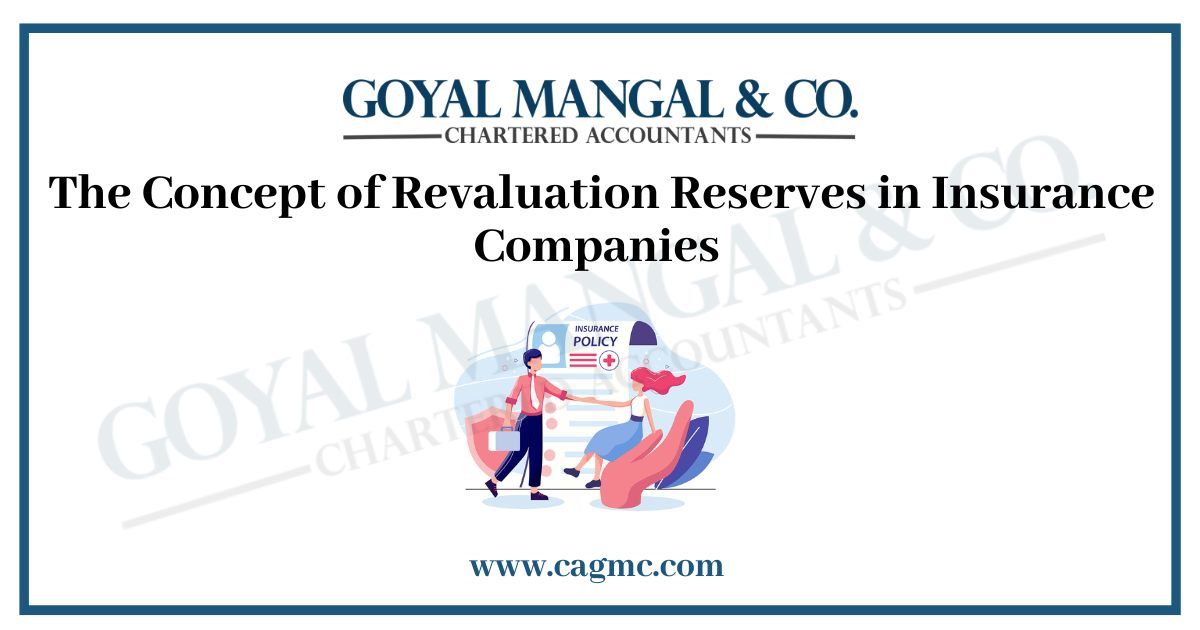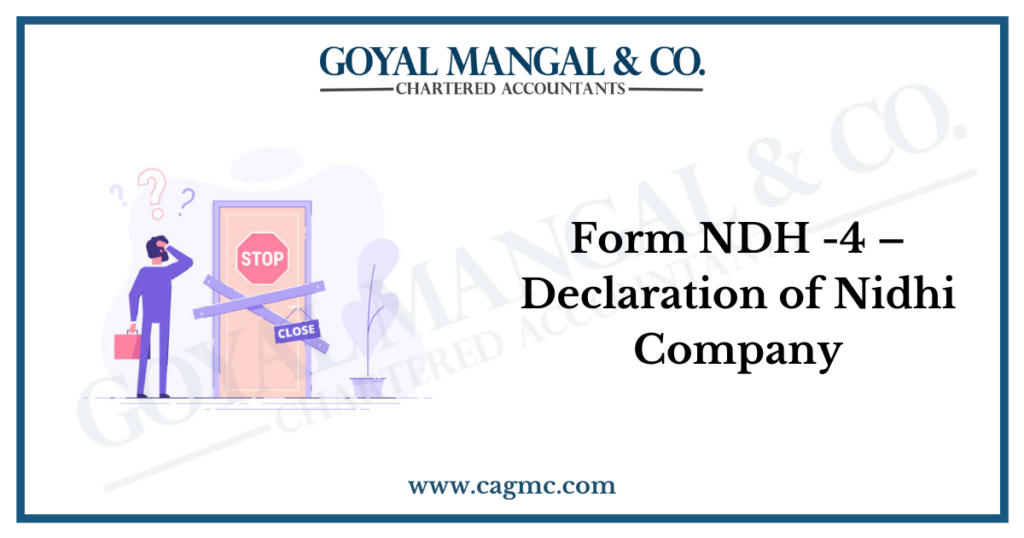
As you know, the review area is a non-monetary reserve created by the company to operate when the market value of other assets occurs above or below the value of the book or book value. Analysis is usually used to show the effect of the difference between the market value of an asset and the volume of an asset book at a particular point in time. This article highlights the concept of Revaluation Reserves in Insurance Companies.
|
Table of content |
Meaning of Revaluation Reserve in Insurance Company
Revaluation Reserve is a non-cash reserve created by businesses to be used if the market value of particular assets is greater or less than the amount recorded in books or Book Value. Revaluation is commonly used to account for the gap between the market value and book value of assets at a specific moment in time. The Revaluation Reserve has a capital nature; depreciation on revalued assets is debited in this reserve, whereas conventional depreciation is debited in the Profit and Loss Account.
A revaluation fund is the accounting term used when a company creates a line item on its balance sheet to keep a contingency account linked to other assets. When a re-evaluation appraisal reveals that the carrying value of an asset has changed, a line item is created. If the asset’s value declines, the revaluation money is credited to the balance sheet, lowering the asset’s carrying value, and the cost is deducted to minimise the overall revaluation cost. If the asset’s value rises, the offsetting reserve expenditure is lowered by credit, but the balance-sheet revaluation reserve is increased by debit.
An asset revaluation is an adjustment to the carrying amount of a fixed asset by adjusting the fixed asset upwards or downwards in accordance with the fair value of the fixed asset. Revaluation may indicate both valuation and depreciation of fixed assets and the purpose of the asset restructuring includes the sale of assets in another business, consolidation or acquisition of a company, and so on. An asset is used when there is a difference between the current market value of an asset and the company’s balance sheet. According to
- US GAAP, all property, plant and equipment are calculated at cost. In addition, fixed assets need to be revised based on cost or market value, depending on which is the lowest.
- IFRS, fixed assets are calculated at acquisition costs. An entity may then use a cost model or a revaluation model.
- In the cost model, the carrying amount of an asset is not adjusted and reduced over its useful life.
- Review fixed and intangible assets. In the revision model, the cost of an asset can be adjusted up or down depending on its fair value. In this case, the asset revision creates a designated area called the “revaluation reserve”. The value in excess is included in the revision and the reduced value is deducted.
Revaluation Surplus in Insurance Business
Preparation of the financial statements of an insurance business is in accordance with the IRDAI (Preparation of Financial Statements and Research Report of the Business Insurance Company) Act 2000, Rule 7. Further, another question that may arise is that-
How to determine the value of an investment?
Insurance brokers should assess their investment as the value of an investment asset is determined at cost and revalued at least once every three years. Changes in the value of the investment letter are transferred to the review area. On each day of the balance sheet, the insurer should check that the planting area is damaged.
Profits and losses resulting from fluctuations in the book value of real estate are regarded as “surplus analysis”. “Investment proceeds from investment” and “Investment losses” include accumulated changes in the carrying amount that Equity recognized under the heading “Revaluation surplus” in relation to certain assets.
Authorities may place orders that determine the amount deducted from the review site for the announcement of additional funding for policy managers. To avoid misunderstandings, no other amount from the revaluation reserve account may be distributed to shareholders other than the amount issued to shareholders as directed by the authorities. Impairment losses are recognized as an expense in the statement of financial performance unless the asset is recorded at revalued amount.
An Impairment loss for a revalued asset is recognized as an impairment loss on that asset and if the impairment loss exceeds the relative net revaluation amount, surplus is recognized as an expense in the statement of financial performance.
Purpose of Asset Analysis
The following are the purpose for Asset Analysis:
- Determining the actual return on investment.
- To determine the market value after a significant increase in value from the initial purchase of durable goods.
- Pack the goods and get a bank loan. A positive review can lead to higher loans.
- In the case of a merger or acquisition by another company, we will negotiate the fair value of the asset.
Asset Revaluation Method
Following are the Asset Revaluation Method for Companies:
Display Method
This method identifies the cost of the asset to determine the current cost. Index issued by the Statistics Office.
Current market price method
Depending on the current market value of the property
- Land Analysis and Construction – You can get real estate / market real estate help to determine the fair value of the real estate market.
- Plants & Equipment – You can get the help of suppliers to determine the right market value for plants and equipment.
Evaluation Process
In this process, a technical appraiser scans an asset to determine its market value. Full balance is required when the AG takes out immovable asset insurance. This approach aims to prevent fixed assets from becoming less expensive / less valuable here are a few things to consider when determining the fair value of an asset.
- Purchase date of adjusted asset to calculate the age of the adjusted asset.
- Asset utilization such as 8 hours, 16 hours, 24 hours (frequency 1 shift = 8 hours) of land, buildings, plants, machinery, etc.
- Adjusted company policy for repairs and maintenance.
- Availability of the remaining parts of the future.
Upward Evaluation of Asset
Asset valuation increases the amount of asset management. In contrast to depreciation, this initial gain is not recognized in the income statement. This is reported to be the final review of capital based on other gross revenue. Therefore, this increase will increase equity among shareholders and reduce overall profitability by increasing inflation. As a result, ROE, ROA and intermediate / uppercase levels have been reduced. Second, suppose the value of an asset decreases, leading to a decrease in the carrying amount of the asset. In this case the loss of revision is initially recognized in other gross income, but only in the amount of the previous income. Losses are recognized in the income statement.
Downward Revaluation of Asset
Downward Revaluation leads to a decrease in the carrying amount of this asset. This decrease or loss is recognized at the beginning of the income statement. Next, suppose the value of an asset increases due to the increase in fair value. In this case the increase is recognized as a gain in the statement of income, but only up to the amount of losses previously recognized in the asset. The revised earnings balance exceeds the income statement and is included in the dividend revenue sharing.
Endnote
From the above, it can be concluded that insurance companies and others treat the revaluation fund differently. The insurance review fee is a reserve, and in accordance with IRDAI guidelines, the insurer pays the policy owner a bonus rather than a dividend. A review, on the other hand, is a non-profit reserve, cannot be used for profit sharing, and cannot be considered a free deposit.


